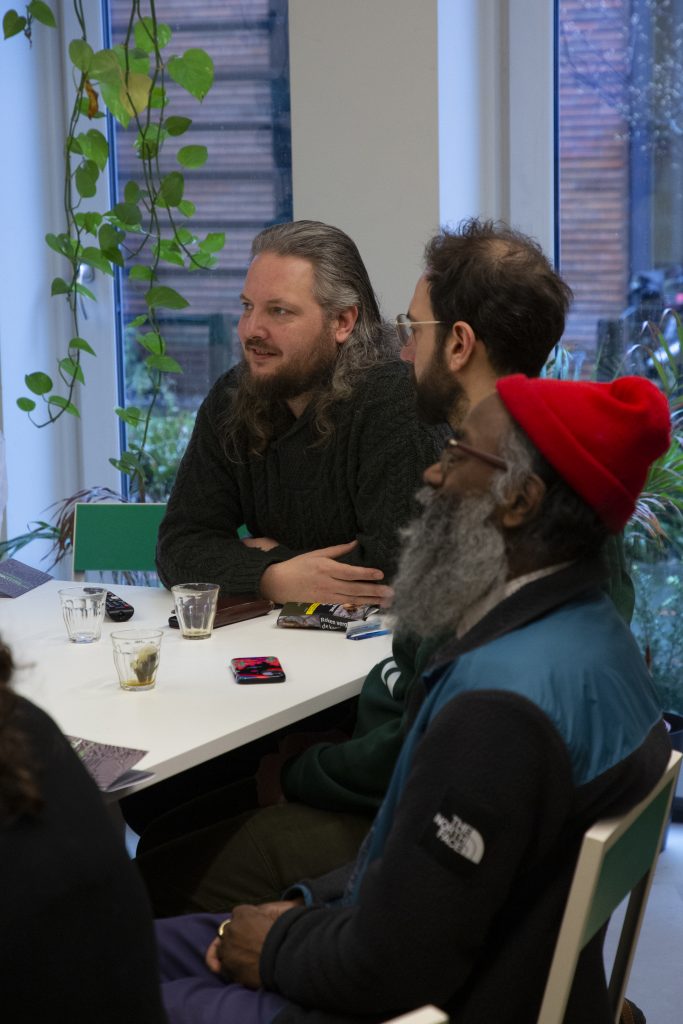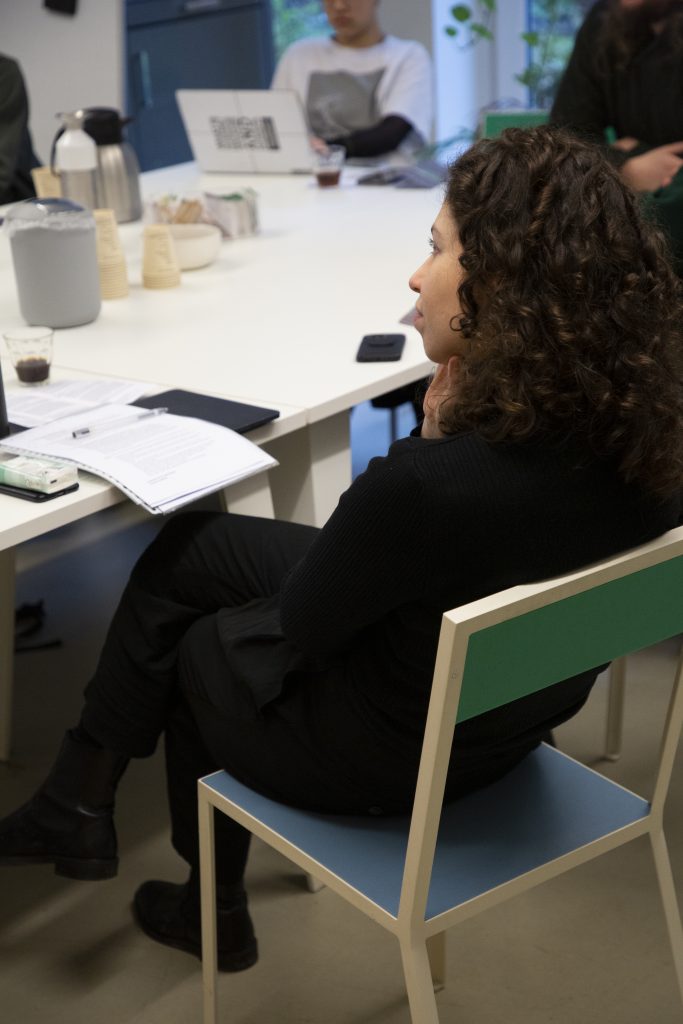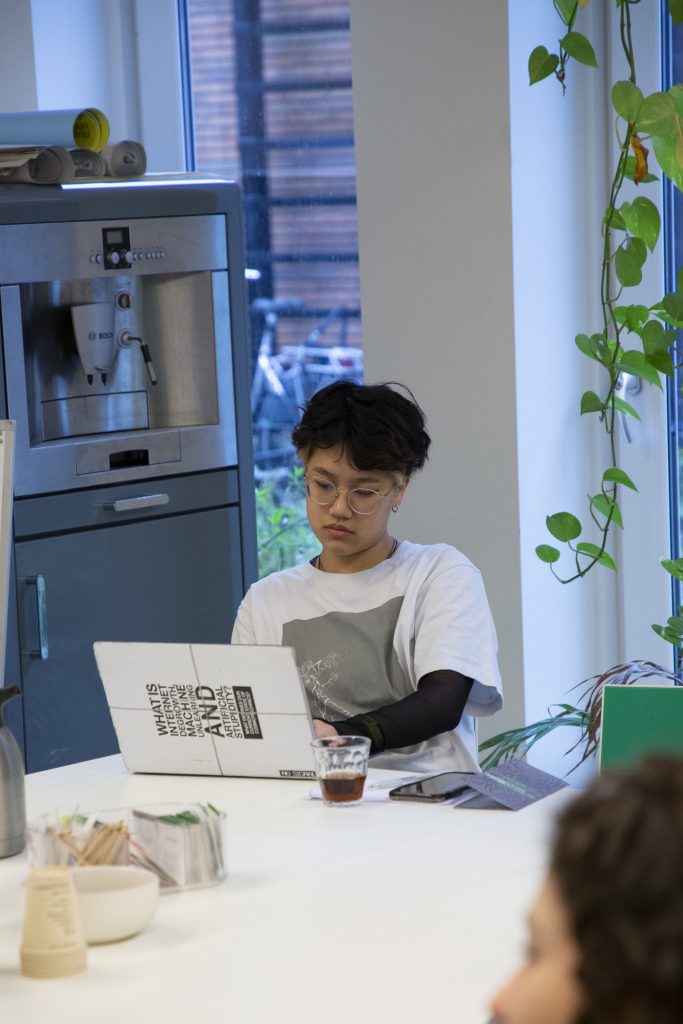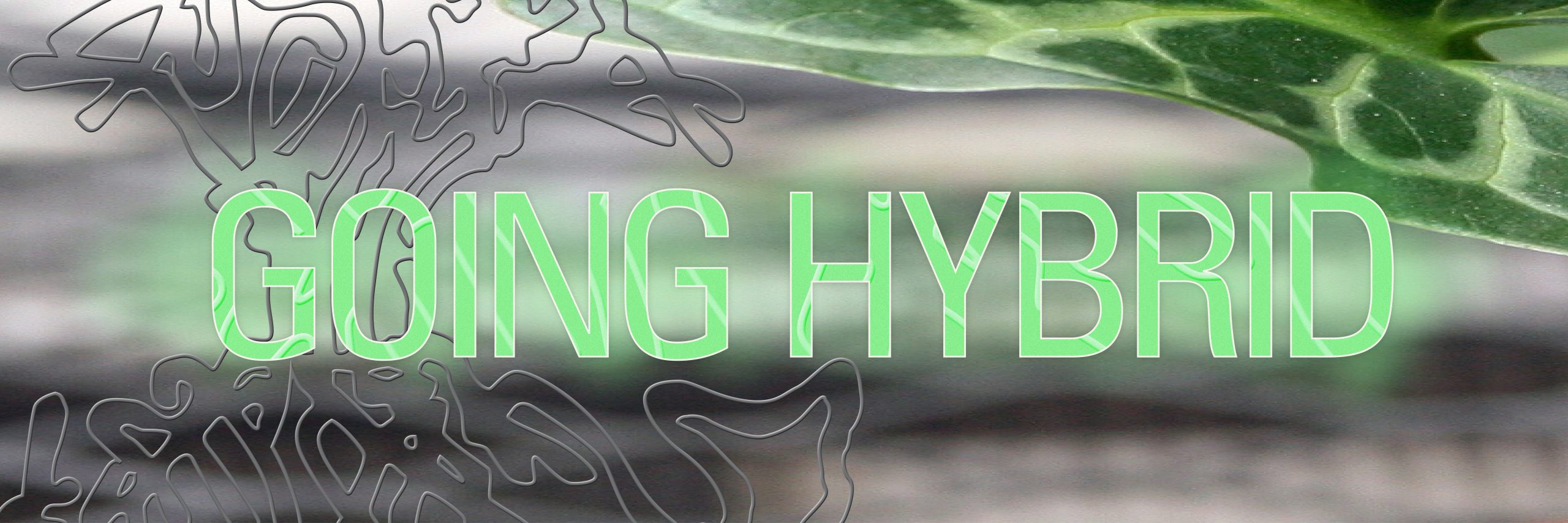This session with the experts Derk Over and Benjamin Pompe was facilitated by Daniela Tenenbaum on behalf of IMPAKT.
In the wake of Covid-19, there was a necessary and dramatic turn to the digital. With court hearings conducted through Zoom, classes taught through Zoom, and work calls taken on Teams; this expert session considers how can we (as artists, researchers, designers, and curators) take advantage of the benefits that we gained during this time and bring them to physical events. This session focused, through the use of case studies, on three main events, all of which presented different ways that hybrid events can engage with the mental, emotional, and physical states of the participants. Tenenbaum states that at Impakt; “Our aim is for artists and non-artists to critically engage with digital non-agency”.
Focusing on themes of non-agency, Geert Lovink points out that there is a strong desire to break from a situation in which “we were locked into the digital” and the tools that were mostly available during Covid-19, such as Zoom and Teams, and instead explore hybrid design formats, as well as what gaming and game design can contribute to these spaces. Therefore, creating a space in which experimental hybrid artworks designed and enacted by members of the community such as artists, researchers, technical designers, and game developers can explore areas of social urgency. In this aspect, skills in human connection are essential, as well as hybridity.

Online Wine Tasting
Participants were emailed wine-tasting kits and guided through a formal wine-tasting process via zoom. They were encouraged to participate in small groups in the same location.
This event experimented mostly with online roundtable dynamics as well as ways to engage the body, through senses, in the online event. This made it so that online participants were allowed to fully engage with the content, thereby creating an interactive, collective, and embodied hybrid event. On reflection, the organizers stated that they successfully fostered a sense of community through this event, in the future, they would like to improve accessibility, reduce the price point and simplify the production processes. Furthermore, they would like to expand the concept through the use of online interactive tours, taste tests, and other activities that focus on engaging the senses through embodied experience.
Homonexus
Homonexus by Derk Over is an experimental hybrid project concerned with the topics of agency, the digital body, and the theory of digital experience. In this experiment, participants (one digital and one physically present) pair up and navigate a pre-designed android society. The physically present participant wears a harness and a phone with the screen and camera facing outwards from the harness placed on the backside onto the bottom of the participant. In this setup, the duo cannot interact directly, therefore emphasizing the discomfort of the technology. There are six tasks, or games that the participants can engage in, each representing one of the six pillars of society. One of these games is called Backwards football, in which the physical players are blindfolded and must play football according to the instructions of the virtual players.
The focus of these activities is to shine a light on the disconnect between the physical and the digital, as the artist states that “my physical body cannot keep up with my digital body”. This experiment aims to make the statement that the digital and the physical body must learn how to engage with and interact alongside each other. The artist comments that the unnatural movements required of the physical participant, on the behest of the virtual participant create a physical muscle ache, as well as create for the virtual participant, a sense of care, as they are given a feeling of responsibility over the bodily movements of another participant. This reduces the asymmetry of the relationship between the physical and virtual participant and therefore does not “feel like an afterthought”. Over focuses on this concept of designed discomfort throughout this entire experiment. Occasionally audibly muting the virtual person, as well as occasionally challenging the virtual person to act out an embodied task, even though they are not physically present. These elements work together to create an experience in which a lack of agency due to camera scope and technological affordances are explored as well as the tension between visual and auditory experience.

Panel Discussion and Questions
How accessible would these technologies (such as the harness) be? Due to production, these technologies would be slightly more expensive
Would it be reproducible in other locations? With concepts such as party boxes, in which this equipment is mailed out to participant groups, this experiment would be semi-reproducible with accessible production costs, minimal pre-existing knowledge, and technical instructions.
Geert obverses that there is often a disconnect between the audio and the visual experience. Stating that within the experience of the Institute of Network Cultures experiments; “the audio drives, but the visual is the fun part”. Furthermore, it is pointed out that for the virtual participant, the experience is almost entirely visual, while for the physical participant, the experience is almost entirely auditory.
Benjamin Pompe
Inspired by old games in which participants were encouraged to interact or collaborate, most of which are abandoned, Pompe observes that most of these now empty virtual spaces remain online as dead servers with a husk/visuals. In a bid to recreate this feeling of abandonment and alienation, Pompe focuses on the concept of archaeology and explores spaces that were designed for interaction, presently abandoned, making them, therefore, an almost ghostly experience. Using fine arts, a mixture of digital and analog formats as well as video game aesthetics, Pompe wishes to experiment with ways to invoke questions of agency, embodiment, and performance. Pompe recounts a performance in which he asked participants to analyze a painting, and then perform the events depicted, in this way the participants relearn and re-understand the painting as well as how to use a body that is not their own.
The proposed experiment is as follows:
Two audiences; one physical, one virtual. One actor is displayed on screen to both the physical and the virtual audience. Each audience is given a different list of prompts that coincide with each other, for instance, the virtual audience is given a list of food the actor can eat, and then the virtual audience may decide which of these food items are poisonous. The audience creates the narrative that the actor performs in real-time. Voting mechanisms; the virtual audience go through a specific portal or preferably a custom-made app to vote, and the physical audience vote by raising their hands.
These dynamics foster a sense of audience ownership and responsibility over the events that occur, each person who participates gets a feeling that they bring something different to the table. Additionally, the interaction and interdependence between the physical and virtual audience create a sense of collaboration as well as incentivized participation. This fosters the dynamics that encourage a collective effort, whether virtual or physical.

Daniela Tenenbaum facilitating the expert session
Panel Discussion and Questions
Observation: The actor has no agency. They are dragged around like a ragdoll or like video game characters. This creates a live body that behaves like a video game character.
Observation: The actor becomes a kind of human filter in the dynamic, they cannot choose what actions they do, but they can choose how to perform them.
“Sometimes you don’t know why you’re alive and why you continue to live, and then you meet someone new and you get to learn a new thing or a new person and then everything is okay again and you carry on” – Over
Considerations of incentives dominated the first half of the general discussion. Pompe makes the point that “Gaming is not about getting a certain award or goal capitalism”. Gamification encourages incentives to continue to play games, but the direction that this incentive goes in is up for debate. Created within late-stage capitalism, do games incentivize players to play using the promise of amassing wealth? Fashioning an online identity? Maybe even, the promise of getting to know a person, place, or thing better.
Within the context of narrative games, it is theorized that the reward is that you get to know a little bit more about the world. Through differentiating between long-term goals and short-term dopamine hits, gamified incentive systems and experimental hybrid projects can explore ways through which to pull an audience through an experience, retain audience attention and ultimately create a space in which exchange, innovation, and connection are possible.

Event reporter Jasmin Leech at work
Main Takeaways
In the face of inflation, climate change, and geopolitical events, these hybrid tactics become more important in fostering community and enabling activism. Some of the highlighted concerns were:
- Accessibility: available technology, reliable internet services, easy to use, low cost, considerations of overly complicated interfaces, overwhelming visuals, the availability of platforms (which may be privately owned and moderated modes of communication); connectivity — bridging the gap between the people who participate in these hybrid activities;
- Attention: exploring experiences such as slow television which counter short-term dopamine attention models;
- Experience: development of hybrid experiences that don’t compete with the physical experience, but still impact the participants;
- Power Dynamics: flipping from top-down to bottom-up approaches.
- We were created in a world without hybridity – we need to adapt.


